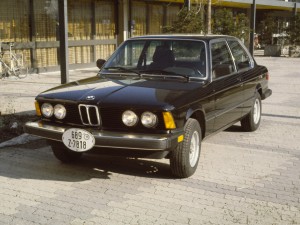The Complete Guide to European Delivery Programs
How to Pick Up Your New Audi, BMW, Mercedes-Benz, Porsche, or Volvo in Europe, Drive on the Autobahn, and Save Money
For the latest information on European Delivery programs, see our 2014 Official Guide to Audi, BMW, Mercedes-Benz, Porsche, and Volvo European Delivery Programs.
When I was 10 or 11, I accompanied my parents to the local Mercedes-Benz dealer for them to discuss ordering a car.
Unlike the way my friends’ parents purchased cars, which was to pick one out at a local dealership, my parents were planning to pick up a new Mercedes-Benz sedan at the factory in Sindelfingen, Germany.
Last year, almost 5,000 Americans purchased a car in a similar fashion, traveling to Europe to pick up a brand new Audi, BMW, Mercedes-Benz, Porsche, or Volvo, and even more will do so this year.
Picking up one’s car at the factory is not, however, a practice limited to Americans. Indeed, BMW built the BMW Welt (pictured), which opened in October 2007, at a cost of nearly 500 million euros largely to accommodate customers in Germany and other European nations who wanted to take delivery at the factory.  Mercedes-Benz expanded its Kundencenter in Sindelfingen (which is near Stuttgart) as well, and both companies deliver up to several hundred cars each day to people who will drive them all the way home.
Mercedes-Benz expanded its Kundencenter in Sindelfingen (which is near Stuttgart) as well, and both companies deliver up to several hundred cars each day to people who will drive them all the way home.
Of course, Americans can’t drive their cars all the way home – but they can drive them in their natural habitat for several weeks and then send them off by ship across the Atlantic. By doing so, they will not only have the trip of their lives but they will be saving anywhere from 4 to 13% and bringing back the largest souvenir possible from a trip, namely a new car.
HOW EUROPEAN DELIVERY WORKS
While European Delivery, also known as Overseas Delivery, Tourist Delivery, or Factory Delivery, is relatively unknown, it is available at every dealership in the U.S. from Audi, BMW, Mercedes-Benz, Porsche, and Volvo.
is relatively unknown, it is available at every dealership in the U.S. from Audi, BMW, Mercedes-Benz, Porsche, and Volvo.
A buyer simply goes to the dealership and orders a car for European Delivery, typically three months in advance of the desired delivery date. The savings vary by manufacturer (see the chart at the end of this article) but they are far from inconsequential as a buyer will save a minimum of several thousand dollars on a purchase, with the exception of cars from Porsche, which does not provide any discounts and, in fact, charges an additional fee for the service.
European Delivery is not only free (except from Porsche) but you get a variety of additional benefits and amenities above what most traditional car buyers would get. One night in a luxury hotel is standard except for BMW. All automakers provide you with admission to their respective museums, and they feed you while you are at the delivery center.
One night in a luxury hotel is standard except for BMW. All automakers provide you with admission to their respective museums, and they feed you while you are at the delivery center.
Volvo will pay for your flight to Sweden (as well as for a friend to accompany you); Mercedes-Benz will waive the delivery fee (currently $875); and BMW invites you to take advantage of a special redelivery program at the Performance Delivery Center at the company’s factory in Spartanburg, South Carolina, which includes a driving school as well as dinner and overnight accommodations.
EARLY DAYS
Today’s European Delivery programs can trace their roots directly back to the 1950s when members of the armed forces returning from Europe brought with them a taste for smaller and somewhat sportier European cars. Indeed, many soldiers and airmen purchased cars for use in Europe and then shipped their cars to the States.
when members of the armed forces returning from Europe brought with them a taste for smaller and somewhat sportier European cars. Indeed, many soldiers and airmen purchased cars for use in Europe and then shipped their cars to the States.
In the 1960s, with the exception of the occasional Volkswagen Käfer (Beetle), a foreign car was truly unusual in the United States. Today’s popularity of European cars can be traced back to Max Hoffman, the Austrian emigrant automotive entrepreneur who, starting in 1948, almost single-handedly created the imported car business in the U.S. and, during the course of his career, imported and/or marketed Mercedes-Benz, Volkswagen, Porsche, Alfa Romeo, Fiat, Jaguar, and BMW vehicles.
Mercedes-Benz, Saab, and Volvo started their European Delivery programs in the 1950s, but the 1960s, with the advent of the jet age, gave European carmakers the impetus to market to those Americans who might be taking their first European vacation. They could drive around Europe in their own car, save on the expense of a rental car, save money on the purchase, and have a great story to tell. Hoffman (then at BMW) and his peers at Mercedes-Benz, Saab, Volkswagen, and Volvo lost no time in aggressively marketing these programs to the first generation of American jetsetters.
Other entrepreneurs saw possibilities here as well. Until U.S. safety and emissions regulations made it near impossible to bring in a European-spec vehicle, enterprising car dealerships in Europe advertised their own independent European Delivery programs.
Click here to continue to Page 2 – Arranging Your Own European Delivery







